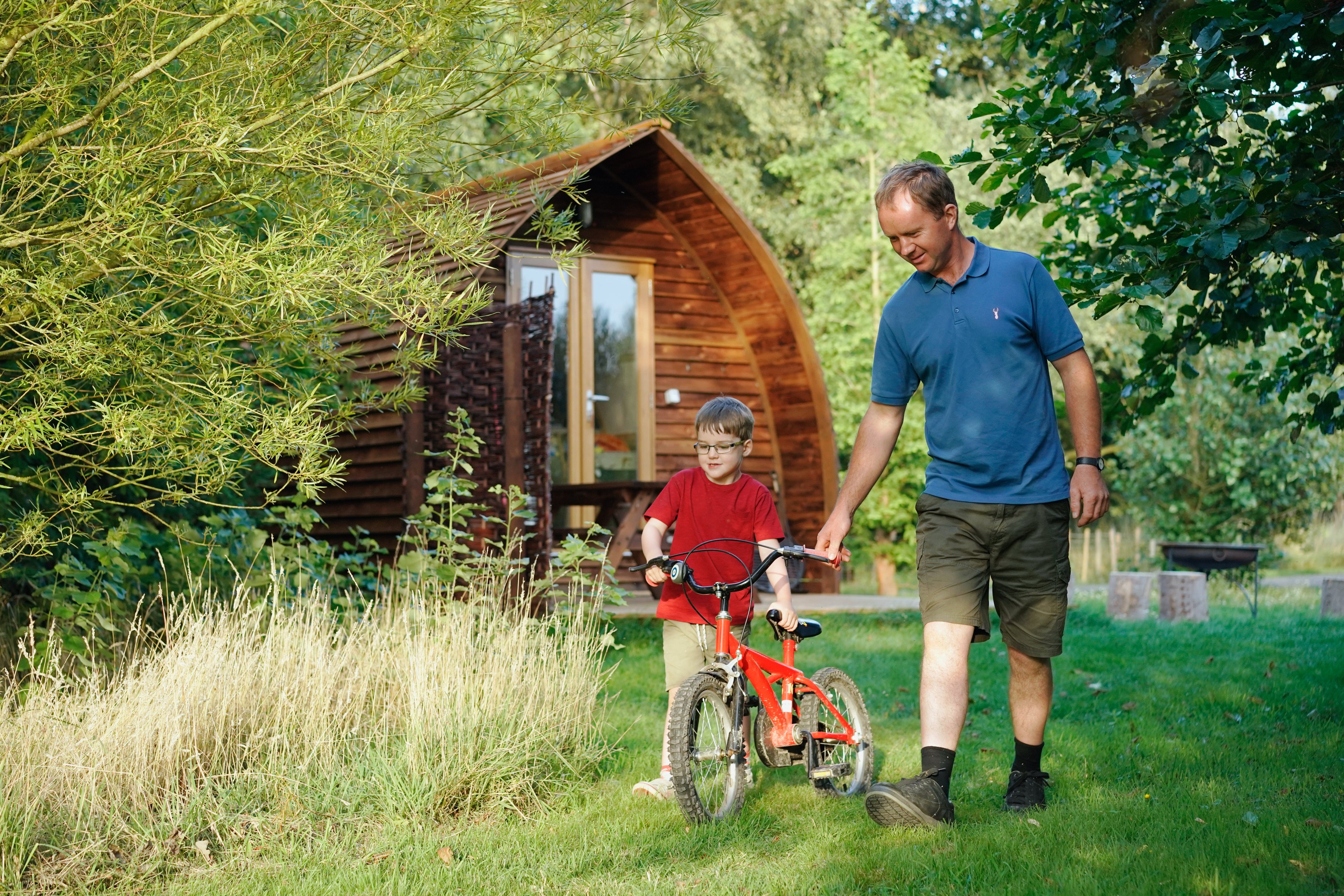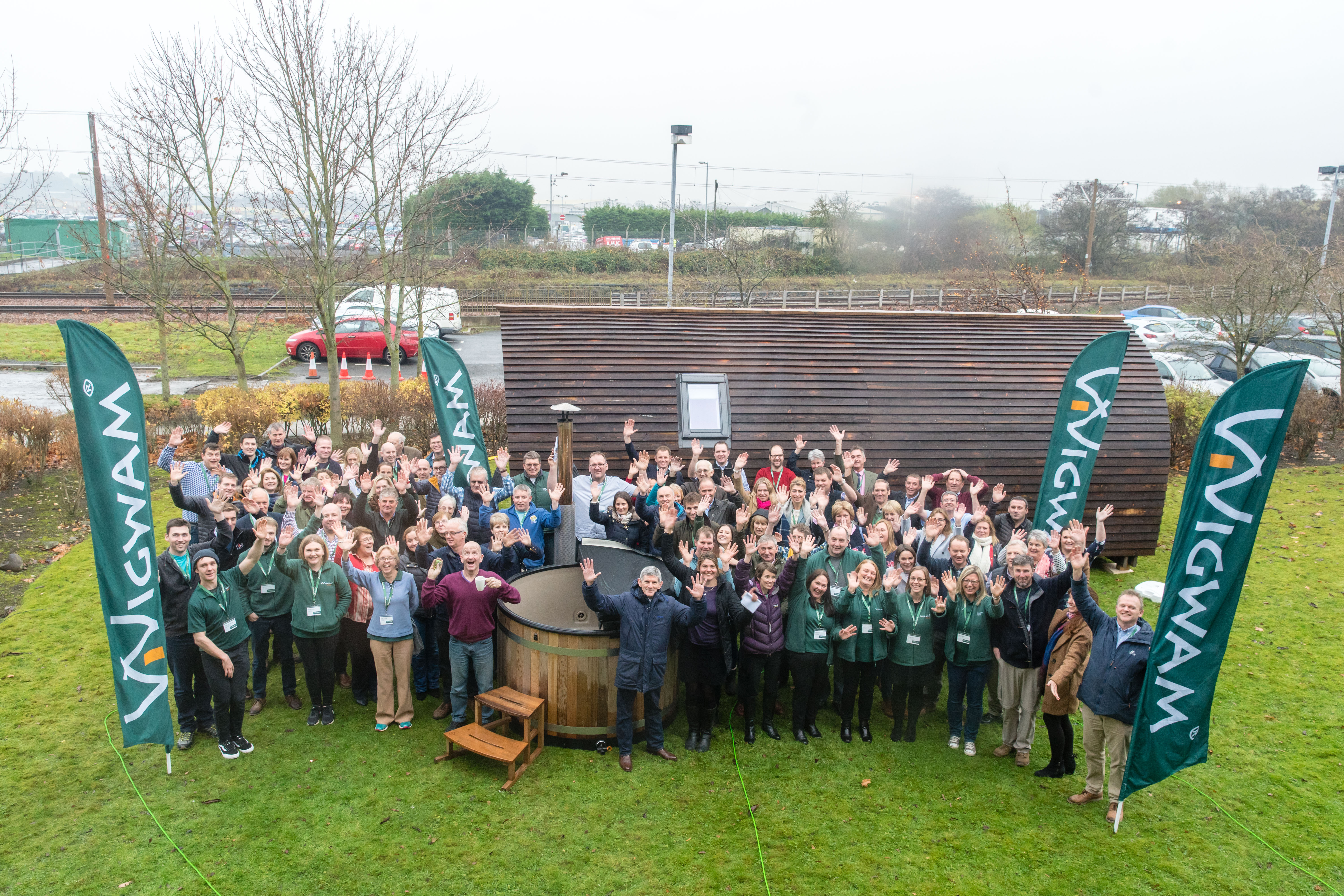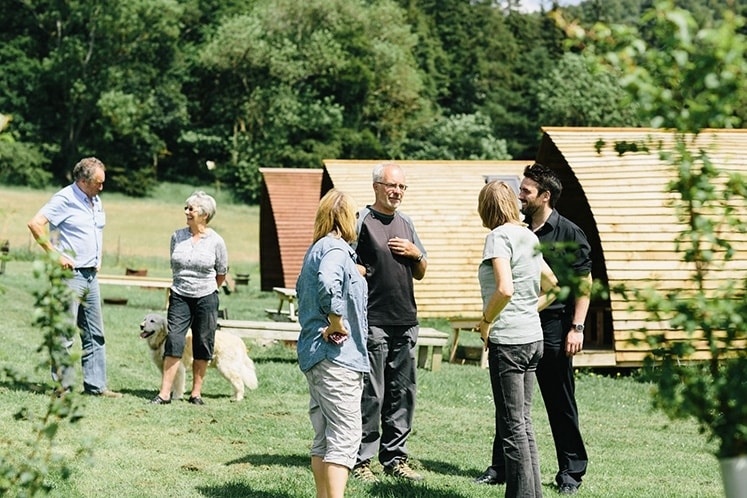
How To Start A Camping Or Glamping Business
We probably don't need to tell you that glamping is all the rage and a trend that’s set to continue to grow! With this in mind, it's easy to see why so many people are interested in starting a glamping business of their own. It sounds easy after all, doesn’t it, to put up a bell tent on a small piece of land and wait for the guests to start rolling in.That being said, you can probably appreciate that it's at least a little bit more complicated to get started in this industry. That's why we've put together the brief guide below to what it takes to get a glamping business up and running. Of course, this is a big topic and we couldn't possibly include absolutely everything in this article, so do check out some of our other articles on starting and running a glamping business over on our blog. If you're thinking of glamping as a means of diversification, have a look at our 'Ulitimate Guide to Farm Diversification'.
Otherwise, read this before you put an order in on those camping pods - it might be the most important thing you read for a long time!
Step 1: Consider the pros and cons
To figure out if this is the industry for you, start by taking a realistic look at your interests, location, finances and the resources available to you. Consider the pros and cons below to get a better idea of whether running a glamping business could be right for you.
The Upsides
1. If you’ve got suitable land for your glamping site adjacent to your home, commuting to work will officially become a thing of the past! And especially in rural areas, this can be a huge timesaver. An unused field or even a very large garden will suffice if you want to start small and don't have big dreams for expanding your site.
2. Especially if you live in a rural area, your local authority is likely to have an open ear for tourism-oriented businesses in their area. This means they'll likely be on your side and will support you in the process - there might even be some very nifty grants available for you!
3. Running a glamping site can also fit well around family life and even an additional job. The trick is to make it work for you and to manage guests’ expectations from the start. So if you don’t want them to arrive at 8 pm, say so! If you choose the right product and it's within local authority restrictions, you can stay open all year round if you wish. Or, if you wanted to keep things seasonal, you could also run your glamping business between, say, March and October, giving you some down time over the winter to focus on other things.
4. If you’re keen on keeping things compact, you might consider offering up a bathroom and shower in your home to your glamping guests. This means minimal outlay in terms of infrastructure on your site, but will naturally impact your privacy, so choose wisely!
5. Another great thing about running a glamping business is that you can really put your own stamp on it. If you’ve got a quirky interior designer inside you, this could be a great opportunity to let it shine! Planning some original aspects to your site to draw in visitors is a great opportunity for innovation and creative thinking. Maybe you could offer hot tubs? An opportunity for guests to interact with farm animals? Disabled access cabins? This will help you differentiate your offering from the competition and create a business you love.

The Downsides
1. The first con we should address is the fact that setting up a business of any kind takes a lot of work and time, but many things can make starting a camping business especially time-consuming. You'll have to figure out planning permissions, setting up your accommodation and facilities as well as how you'll market and drive sales for your business. So patience is a prerequisite!
2. Like with most hospitality and leisure industries, getting started in glamping can be a bit of slow burn – it might take a while for folks to get to know you! That's why you need to put in a continuous PR and marketing effort to get your name out there, updating your website and social media and treating returning visitors like royalty so they'll be more likely to recommend your business to others.
3. Working in the tourism industry means you’re often working during bank holidays, weekends and other peak times, when previously these might have been times you took for granted as ‘down time’. Similarly, you'll also have to handle a lot of cleaning that can eat into your free time unless you're in the position to hire someone to do that. And especially at the start of running your business, this might not be a possibility for you.
4. When you're in such a people-facing job as glamping, you can’t really have a bad day – at least not one your guests can sense! They expect you to be helpful, warm and on your best behaviour at all times, so if you’re not a people person with a relatively long fuse, hospitality might not be the right field for you.
5. Sometimes, you’re only as good as your last review! You'll need to be prepared for niggling comments that will probably annoy you. To run a successful glamping business, you need to have a thick skin and stay professional and open to feedback at all times, even if you disagree.
Step 2: Get planning
Planning permissions
More often than not, you'll need to get planning permission for your glamping site. If you haven’t done so already, approach your local authority or council about their planning regulations. Making early contact can save you time, money and hassle in the long run. You should also start putting feelers out for possible funding options that may be available to you in your area.
Keep in mind that if your chosen location falls within in a national park, an Area of Outstanding Natural Beauty (AONB) or a Site of Specific Scientific Interest (SSSI), you’ll also need to know the specific requirements and restrictions of running a hospitality business in your area.
When you've figured out what kind of glamping accommodation you'd like to offer, consider how many tents, yurts or camping pods you'd like to have. Think also about what additional facilities you'll need onsite, like a shower and toilet block or a communal kitchen. You'll need this information when talking with local officials about planning regulations. Do think ahead as well: while you might want to start off with a small number of units, are you aiming to expand in the future?
Your competitors and finances
Do some competitor research into other glamping sites and holiday accommodation in your local area. How close to you are they? What type of accommodation do they provide and what's their unique selling point? Are they open all year and what kind of prices are they charging? Doing some snooping here will help you to effectively distinguish yourself from your competition and form your own unique value proposition.
Think also about whether you’ll have time to do your accounts and how the business will affect your tax situation. There are specialist accountants who can help you with this, particularly if you're planning on working for another employer or as a sole trader while also running your glamping business.
Step 3: Figure out your website and glamping marketing
What to add to your website
The first thing to do is set up a website. These days, there are many drag-and-drop options out there, making setting up a website feasible even for those without any tech knowledge. Meanwhile, working with a website developer will ensure everything works well, is optimised for search engines and that you can seamlessly integrate a booking engine to your site.
These days, you'll definitely need to offer online bookings of some sort, so look into different booking engines to add to your website. This can be a tricky process as the market place for online bookings is hugely saturated with lots of variation, so do talk to sales reps and request a clear outline of booking fees, contractual obligations, additional fees and the customer support they cam offer you.
While working on your website, you should also start thinking about your Terms and Conditions. Consider whether or not you'll accept group bookings, what code of conduct (like a noise curfew) guests have to follow and whether you allow pets or campfires on your site. You should also have a written cancellation policy. Research what to add to your site's T&Cs and ensure yours are both easy to understand and airtight.
Figure out your glamping marketing and PR
Set up profiles on social media platforms you think will be most used by your target audience and start posting regularly. Use good photographs and simple posts to explain where you are, when you’re open and always include a clear CTA (Call To Action) in posts. This could be something like a link to book online.
Long before your opening date, you can become your own dynamic PR machine. There are a number of ways to do this effectively, and while there are many ways to shout about your business, you need to stand head and shoulders above a very noisy marketplace. A press release is a good place to start. Look into online templates and write a concise, accurate press release to send out to the local and regional press. Additionally, you could contact local publications and see if a writer on their payroll could stay with you as your guest and write a review.
What's more, local publications are often happy to run a competition with local businesses. This usually involves offering a two-night stay for a family of four as the prize. While this will mean missing out on paying guests during that two-night stay, it’s usually a highly effective way of getting the word out about your business.
If you have a leaflet about your site, see where you can distribute these. The local pub? The nearest Tourist Information Point? A nearby attraction? Always ask permission to distribute flyers - don’t just leave them and run out! Not only is this a waste of resources, it can also cause ill feeling with the venues.
You should also consider becoming a member of your local tourism association - this will give you access to many resources and help raise your profile. Weigh up your options: what do you really get for your subscription fee? If you do join one, be prepared to nag a bit for publicity - in a nice way, of course!

Step 4: Add the finishing touches and welcome your first guests
Consider if you can offer value-adding extras to your site to entice potential visitors even more. These could include things like bed linen hire, breakfast packs and firepits. Research the costs of offering these extras so that the charge you take for these covers the cost comfortably without making the price eye-watering for your guests. Be prepared for mishaps and breakages and have sufficient replacement items on hand so you’re not caught out.
Before your big opening, start putting together a welcome pack for your guests to really wow them. This should include things like local restaurants, attractions and events. Do remember that this document will need updating periodically! Make sure to add site rules to the welcome pack as well. Additionally, a site map could prove invaluable if you’re not around for the meet and greet.
Speaking of which, you'll need to work out a solid meet and greet procedure. Can your guests check in on their own or will you or a member of staff meet them to hand out keys and answer questions? This is one of the most important parts of your guests’ experience, so be sure the procedure is clearly communicated to them. The meet and greet can set the tone for the rest of a guest's stay, so make sure to get off to a good start!
And finally, remember that if anything goes wrong during a guests’ stay, you need to be able to step in and help. Most guests are reasonable about any problems, but you always get ones who aren’t, in which case:
DO keep calm
DO listen (and maybe take notes)
DO apologise for any inconvenience caused
DO come up with an immediate, polite response such thanking them for bringing the issue to your attention and looking into how can sort it as soon as possible.
DON’T get angry or defensive
DON’T challenge what’s been said (yet!)
DON’T – show your frustration or become unhelpful – most difficulties can be sorted relatively easily
While there are always going to be complainers, the key to sorting out a difficult situation is to remedy it as soon as possible if you can. And if you can’t, consider other options, like a partial refund, a free breakfast pack or a free return stay. Of course, this all depends on the situation, but do bear in mind the power of social media and travel review sites! Any guest leaving with a poor impression will certainly let everyone know, so swallowing your pride and offering a freebie could be the best way to avoid a publicity blunder.
Choosing between going solo and joining an established franchise
If all of the above sounds a bit overwhelming, don't worry! While going it alone can be a highly rewarding experience, you also have the opportunity to join an existing glamping brand as a franchisee so that you'll have all the support you need on your journey to becoming a successful glamping entrepreneur.

Joining The Wigwam® Holidays Franchise
Wigwam® Holidays is one of the UK’s leading glamping accommodation providers with 80+ sites nationwide. We offer a range of high-quality timber camping pods that make for comfortable and stylish accommodation all year round. Additionally, we support our franchisees every step of the way from planning permissions and erecting your accommodation to IT, operations, sales and marketing so that you won't feel like you're taking the leap into entrepreneurship alone.
You'll also get your own, beautiful website for bookings and access to decades of glamping expertise. You'll also benefit from exposure to the established and enthusiastic fan base built around the Wigwam® brand. To find out more about what joining the Wigwam® franchise entails and to get in touch with us, click the link below.



